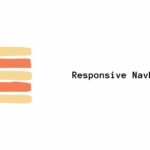In today’s digital landscape, efficient and user-friendly user interface (UI) design plays a crucial role in the success of any application. Especially when it comes to CRUD (Create, Read, Update, Delete) operations. In this article, we will explore the key principles and best practices for designing the Best CRUD UI Design. Which enhances user experience and maximizes productivity.
Introduction
Introducing the concept of CRUD operations, which form the backbone of many software applications. These operations involve creating, reading, updating, and deleting data. It’s essential to design UIs that streamline these actions while ensuring a seamless user experience.
Imagine this: You're drawing a lovely picture on your computer, and 'create' means you can paint your imaginary friend on the digital canvas. But wait, the color of your friend's hat isn't right! That's when 'update' comes to the rescue, allowing you to correct the hat color to your satisfaction.
Now, 'read' is like opening your album and admiring your drawings - it's how you view your data. Oops, you accidentally drew a tree that wasn't supposed to be there, but that's not a problem because 'delete' lets you remove it. Ensuring each of these actions is smooth and easy is a vital job for UI designers.
Understanding CRUD Operations
A brief explanation of each CRUD operation and its purpose. By understanding how these operations work, We can better appreciate the importance of UI design in facilitating them effectively.
Importance of UI Design in CRUD Applications
Highlighting the importance of UI design in CRUD applications. Emphasizes the impact it can have on user satisfaction, productivity, and the overall success of an application.
Key Principles of CRUD UI Design
4.1 Consistency and Familiarity
Explaining the importance of maintaining consistency in UI elements and leveraging familiar design patterns to create a sense of familiarity and ease of use for users.
4.2 User-Friendly Interface
Discussing the significance of designing a user-friendly interface that guides users through the CRUD operations intuitively and minimizes the learning curve.
4.3 Clear Navigation and Information Hierarchy
Emphasizing the need for clear navigation and a well-defined information hierarchy. It enables users to locate and access the relevant data with ease.
4.4 Responsive Design
Highlighting the importance of responsive design in CRUD UIs, ensuring compatibility across different devices and screen sizes. It enables users to access the application seamlessly from any platform.
4.5 Error Handling and Validation
Exploring the crucial aspect of error handling and validation in CRUD UI design, discussing techniques for providing meaningful error messages, and preventing user frustration.
Best Practices for CRUD UI Design
Outlining several best practices that can be implemented to create effective CRUD UIs and optimize the user experience throughout the data management process.
5.1 Simplified Forms and Input Fields
The principle of simplicity in form and input field design is paramount in creating smooth and error-free user experiences. Specifically, in Create, Read, Update, Delete (CRUD) operations, the simplification of these elements can significantly reduce cognitive load and friction. By designing user-friendly and easy-to-navigate forms, the overall user interaction becomes more efficient and enjoyable. Let's explore some practical examples demonstrating the ways complex form or input fields can pose challenges in performing CRUD operations, and how their simplification has provided solutions.
Moreover, when we look at error handling, the benefits of simplifying forms and input fields become even more critical. An optimized data entry form designed with simplicity in mind minimizes the error rate, ensuring more accurate data entry and less frustration for users.
The exciting aspect is the future trends in form simplification and input field design. Innovations are gradually evolving to create even more seamless user interactions, providing deeper insights into this relevant subject. The text below will delve into these trends, connecting you to the latest in UI/UX design.
5.2 Intuitive Data Display
It is vital to discuss the significance of presenting data in an aesthetically pleasing and user-friendly way which not only ensures effortless comprehension and immediate access to pertinent information, but also makes CRUD operations efficient and seamless. Articulating this crucial point connects the need for understanding data to the design of the user interface for CRUD operations heralds the ethos of effective design principles. For instance, such principles help users capably create, read, update, and delete data.
Furthermore, delving into the specifics of user-friendliness and clear navigation in data presentation, we see an important correlation with the smooth running of CRUD operations. An accessible, intuitive interface isn’t just aesthetically pleasing, it goes a long way in complementing effective data management.
Moreover, this dialogue is rooted in the principle of user interface design, refining the discourse from a broad discussion on data presentation to a more concerted focus on user-centered design. This overarching theme of UI design is essential in understanding the context of the discussion for the larger article.
To provide an illustrative example, visually pleasing and intuitive design not only makes the interface attractive but also amplifies the usability of CRUD operations. A user-friendly design greatly streamlines the process of data manipulation, saving users significant time and minimizing possible errors. To put it simply, in CRUD operations, an excellently conceptualized and visually engaging UI can result in effortless data management, making the user experience more seamless and intuitive.
5.3 Efficient Data Editing and Updating
Exploring techniques to streamline data editing and updating processes, such as inline editing, bulk editing, and providing clear options for saving or discarding changes.
5.4 Streamlined Delete Operations
Highlighting strategies to simplify delete operations. It includes confirmation dialogs, undo options, and providing clear information about the consequences of deletion.
5.5 Undo and Redo Functionality
Discussing the benefits of implementing undo and redo functionality. It enables users to reverse unintended actions and provides a safety net during CRUD operations.
Case Studies of Effective CRUD UI Designs
Presenting real-world case studies of applications with exemplary CRUD UI designs. It demonstrates how the discussed principles and best practices can be applied in practical scenarios.
6.1 Product Management System

Exploring a product management system that excels in providing a seamless CRUD experience for managing products, including intuitive navigation, quick data editing, and efficient search capabilities.
6.2 Customer Relationship Management (CRM) System

Examining a CRM system with a well-designed CRUD UI, showcasing features such as contact management, lead tracking, and seamless integration of customer data.
6.3 Task Tracking Application

Highlighting a task tracking application that effectively manages CRUD operations, enabling users to create, assign, and update tasks with ease, and providing visual indicators for task progress.
Future Trends in CRUD UI Design
Offering insights into the future of CRUD UI design, discussing emerging technologies and trends that are likely to shape the way we design and interact with CRUD interfaces.
Conclusion
Summarizing the key points discussed in the article, emphasizing the importance of designing user-centric CRUD UIs and providing a seamless experience for managing data effectively.
FAQs
Q1: What does CRUD stand for?
A1: CRUD stands for Create, Read, Update, and Delete, which are the fundamental operations used to manage data in many software applications.
Q2: Why is UI design important in CRUD applications?
A2: UI design is crucial in CRUD applications as it directly impacts user satisfaction, productivity, and the overall success of an application.
Q3: What are some common best practices for CRUD UI design?
A3: Some best practices include maintaining consistency, providing a user-friendly interface, clear navigation, responsive design, and effective error handling.
Q4: How can CRUD UI design improve data management efficiency?
A4: Well-designed CRUD UIs simplify data entry, editing, and deletion processes, resulting in improved efficiency, reduced errors, and enhanced user experience.
Q5: What are some future trends in CRUD UI design?
A5: Future trends include the integration of AI and voice-based interfaces, enhanced data visualization techniques, and seamless cross-platform experiences.




